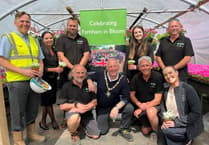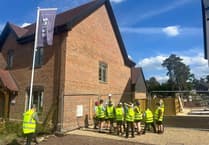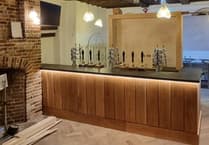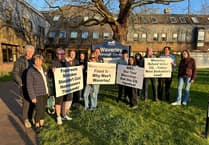Details of Woking Borough Council’s asset disposal strategy have yet to be published – but drilling into government paperwork reveals clues as to what residents can expect, writes Chris Caulfield of the Local Democracy Repairing Service.
A report sent to the Department for Levelling Up, Housing and Committees (DLUHC) recommends keeping any assets that make money, holding those that have been significantly devalued, working in partnership to monetise others – and selling what doesn’t fit in with that.
The borough council is undergoing an asset disposals strategy as part of its recovery plan after issuing a Section 114 notice effectively declaring itself bankrupt earlier this month.
Before it approaches the government asking for a bailout, it must demonstrate it has done everything in its power to lower spending and increase revenue to bridge a £10m a year budget gap and start to close its £2.6billion debt and £1.2bn deficit.
Immediately this has led to speculation that high-profile items such as Victoria Square and Sheerwater developments – for many the root cause of the debt – could be first to go.
Other assets that have raised eyebrows include two pubs and a set of cutlery currently sitting in the unopened Hilton Hotel.
However a high-level review sent in May to DLUHC said: “A rapid sale of assets would be an inappropriate course to recommend and would be very detrimental to the council’s financial position”.
What we found
By far the council’s biggest asset is the much-devalued Victoria Square development. Selling would bring in the most money but the report cautions against this and suggests finding ways to maximise the revenue from its flagship sites.
It says the “current value of the assets has been estimated to be £300m to £350m against the outstanding debt of £700m. Therefore, by stopping the working capital support without a longer-term strategy in place, the council would need to write off a significant amount of outstanding debt.”
It added “the council must therefore consider how it can best use its asset base to reduce its debt levels and maintain an overall balanced budget.”
Big-ticket items listed among the assets include Brookwood Cemetery, the Peacocks centre, David Lloyd Club, Hoe Valley School, Horsell Common and the New Vic Theatre.
These, according to the report, would need to be judged on a case-by-case basis on how much they bring in, versus how much they cost to run, unless new ways of partnership working can be found.
The borough council is said to make about £22m a year from its commercial assets.
The report said: “According to the review, 37 per cent of the council’s asset base is investment properties which have a net book value of £330m at the end of 2020/21.
“They are valued at fair value, or the price that would be received for selling the asset, and were revalued £43m downwards during that year to reflect the market position.
“These assets, which are separate to the investments in Victoria Square Woking Limited and the Thamsewey development, currently generate about £22m income that supports the revenue budget.”
It would appear the 15 car parks listed as council assets are off the table and will be kept as they bring in valuable income – although the figures are collective and do not rule out selling any underperforming sites.
The report said: “The council’s assets currently generate £30m of income annually. This is made up of £22m from commercial properties and £8m from car parking.”
The borough council’s register shows it owns 385 assets, many outside the remit of long-term regeneration, commercial sites or significant income streams.
The council lists 11 allotments, five bowls clubs, two Scout huts and village halls in Alpha Road, Byfleet and Mayford among its assets.
It also owns recreation grounds in places including Blackmore Crescent, Sheets Heath, St Peter's Road, Sussex Road and Wishbourne Way.
If these are to all be kept, the council would need to find ways of fitting them into its “ long-term commercial strategy to consider external partnering which could include all council assets” as it considers “the value of non-core services that could be wrapped into new partnering arrangements”.
‘Critical this strategy maximises value and cuts operational cost’
The sheer scale of the council’s debt – £2.6bn in the next three years and a £1.2bn deficit – means it “needs to dispose” of its assets while balancing a requirement to achieve ‘best consideration’ for the sale of a local authority assets – including land.
Underlying how complicated the picture has become, any transfer of “land or property assets to internal or external companies will also attract stamp duty land tax (SDLT) and this would occur again at final sale, effectively paying SDLT twice”, so the report advises assets should only be sold when they “are ready for final sale”.
To oversee the project, the council has commissioned a property asset management strategy. The report says “it will be critical this strategy maximises the value from the estate and reduces operational cost.”
A Woking Borough Council spokesperson said: “The council will need to dispose of assets and investments to fund its recovery and pay its debts.
“It will do so in a managed way and will be developing an asset disposal strategy alongside a comprehensive commercial strategy which will be a key element of its overall recovery plan that is currently being developed.”





Comments
This article has no comments yet. Be the first to leave a comment.